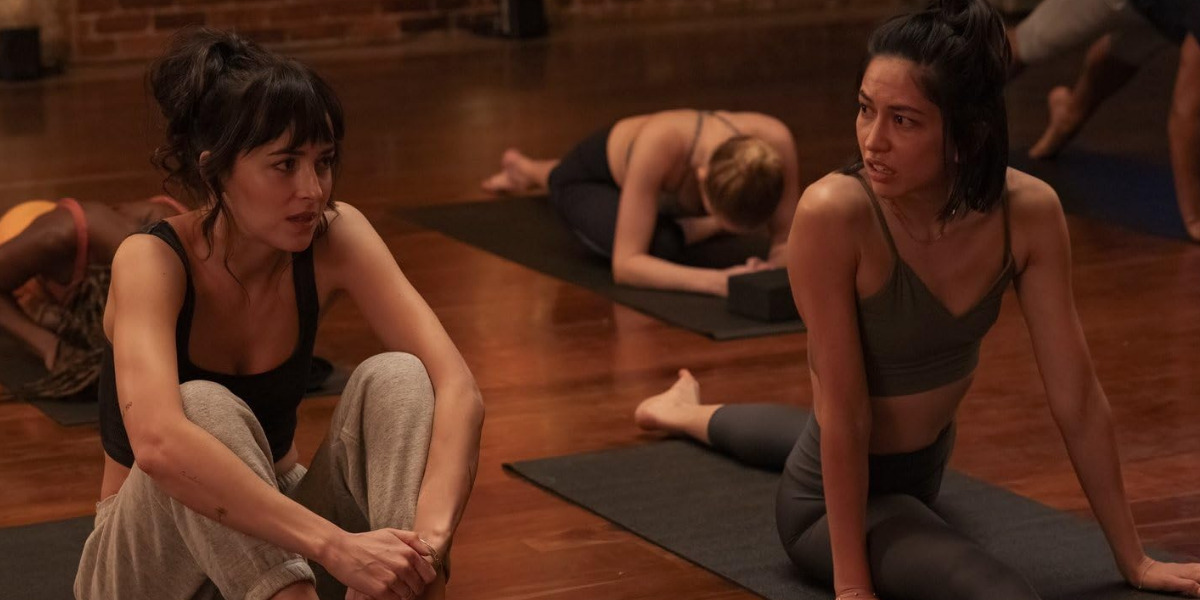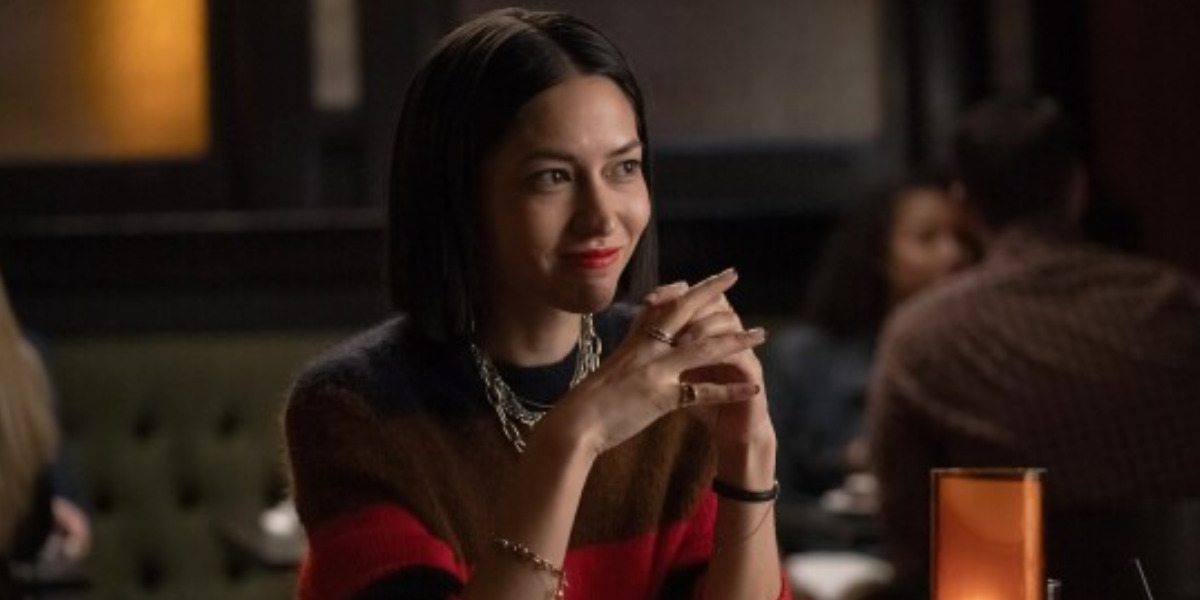Stephanie Allynne and Tig Notaro’s ‘Am I OK’ centers around the long-standing friendship between two women who face new challenges in their early thirties that threaten to tear their connection apart. Lucy, whose uncertain and anxious disposition prevents her from making giant leaps, discovers her sexuality and promptly has a crisis about entering the lesbian dating pool late in her life. Meanwhile, Jane, who is used to solving her best friend’s problems, receives a promotion at work, which includes a move halfway across the globe to London. Consequently, the life-altering changes in Lucy and Jane’s lives cause friction that leads to complications, testing the strength of their friendship.
One of the instrumental events that force the mounting tension between Jane and Lucy to crest emerges from the former’s attempts at helping the latter with her sexuality crisis. While Jane’s heart remains in the right place— her own fluidity only ends up increasing Lucy’s frustration. While the same retains narrative significance, it also raises the question of Jane’s relationship with her own sexuality. SPOILERS AHEAD!
Jane Remains Confident and Secure in her Heterosexuality
Since the film revolves around Lucy’s initial steps into dating within the LGBTQ+ community— and Jane’s subsequent attempts at smoothening the process for her friend, the topic of sexuality remains highly relevant within the narrative. Initially, Lucy gains the courage to broach the subject after learning about Jane’s brief stint in high school, where she drunkenly made out with another girl. Despite their years of friendship, Lucy has never heard the story before, leading her to question a few things.

Lucy’s unresolved relationship with her sexuality stems from various places— from self-doubt to the stigmatization around the lesbian identity tag. Therefore, after she hears her best friend speak casually about her own non-platonic experience with another girl, the idea of confronting her homosexuality becomes less daunting for Lucy. However, Jane’s casual attitude toward the topic also breeds massive insecurity within the other woman.
Jane has always identified as a heterosexual woman. As the story begins, she is in a happy relationship with her long-term boyfriend, Danny, and seems to carry no confusion regarding her sexuality. For the same reason, she doesn’t over-examine her non-existent attraction toward other women and is able to brush off any occasional homosexual experience as a funny anecdote. For Jane, the implication of kissing another woman holds almost none of the same weight it might to someone like Lucy.
The same remains a testament to Jane’s heterosexuality, showcasing how little one needs to worry about being secure in one’s identity when it is the automatic default within society. Therefore, Jane remains a blatant contradiction to Lucy, who finds herself overthinking the general basis of romantic and sexual attraction to understand her feelings. Consequently, Jane’s flippancy toward dating, visiting gay bars, and even making out with other women unintentionally furthers Lucy’s insecurity.

Witnessing Jane make out with a stranger who happens to be a woman makes Lucy feel absurd since she unfairly compares their experiences. Lucy can’t help but wonder why she struggles so much with showcasing her attraction toward women if Jane, a straight woman, can allow herself to dance with and kiss a woman at a lesbian bar. Nevertheless, the same emerges from the former’s own insecurities rather than logical thinking. Eventually, once Lucy begins to explore her sexuality healthily, she likely begins to understand that Jane can easily slip into homosexual experiences with other women only because it demands no vulnerability or consequences from her. It’s such a non-issue for her that she doesn’t even consider kissing a woman as an act of infidelity toward her boyfriend.
The inherent disparity between Jane and Lucy’s experiences in scrutinizing their sexuality leads to some miscommunication, which eventually results in an argument between the two women. Although Jane’s overbearing nature and Lucy’s lack of transparency remain the prime suspects in fueling the momentary scrimmage between the two women, at the core, it’s only a matter of lack of communication and understanding. Nevertheless, both characters are able to reconcile in due time, refusing to allow their differences to come between their invaluable friendship.
Read More: Dakota Johnson’s Am I OK?: Exploring Filming Locations


You must be logged in to post a comment.